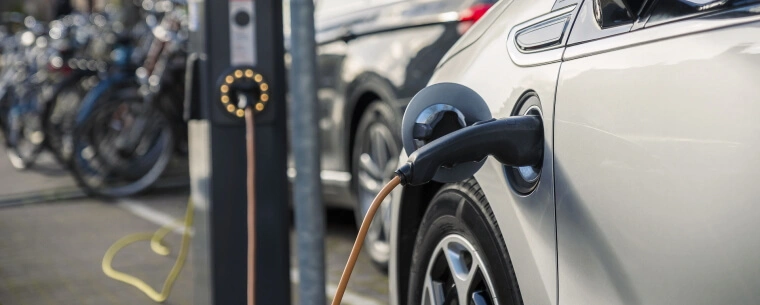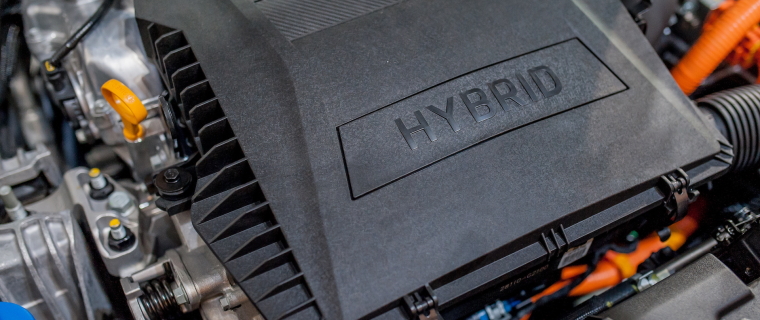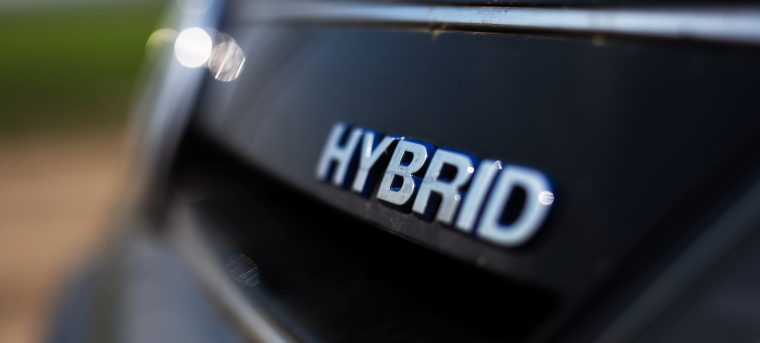How do Hybrid Cars Work?
Jack Dreyer | Thursday 17th March 2022 9:30am

Britainís roads are changing. If you look at a stream of traffic on the street, youíll see a huge difference from 5 or 10 years ago. You may even hear a difference too. Gone are the days when petrol and diesel-guzzling roadsters would dominate Britainís motorways.
Instead, there has emerged a whole range of different petrol alternative vehicles. From standard hybrid cars and plug-in hybrids to full-on electric cars, the motoring scene has never been more green.
But how do these vehicles work?
Read on to find out just how hybrid cars operate and how their innovative technology is helping to reduce pollution levels across the country.
What is a hybrid car exactly?
To put it simply, a car is classified as a Ďhybridí if it uses more than one means of power. That is, if a car combines a petrol or diesel engine with an electric motor.
Hybrid electric vehicles (commonly referred to as HEVs) are usually powered by an effective combination of a combustion engine and one or more electric motors that use energy from batteries. Such a combination allows for simultaneously high fuel economy and low emissions alongside all the other benefits of regular vehicles such as speed and power.
What are the unique features of hybrid cars?
This relatively new type of vehicle comes with a whole range of unique features, positioned conveniently between entirely electric and regular vehicles.
1. Electric motor support
The battery works overtime in hybrid vehicles, providing extra power to allow for a smaller combustion engine. Alongside this, the battery works to reduce the amount of engine idling which, in turn, promotes a greater level of fuel economy at no detriment to the performance of the car.
2. Regenerative braking
While weíll dive into this further when we discuss how hybrid cars work, regenerative braking is what makes hybrid cars hybrid Ė so to speak. Since HEVs arenít able to plug into electric chargers, they gain their power (aside from the combustion engine) by charging with brakes.
Any energy that would otherwise be released and lost when braking is captured using a generator in the form of an electric motor and is then stored in the battery.
3. Lower emissions
Since hybrid vehicles donít rely entirely on combustion engines, using the stored energy in the battery for power instead, their emissions are lower. With HEVs, you can enjoy a greener way of driving without fully committing to the charging necessities of electric vehicles. You can find out how electric cars work here.
Now that weíve explored their unique features, itís time to actually find out how hybrid cars work.

How do hybrid cars work?
Parallel hybrid
The most common form of hybrid is known as the Ďparallelí hybrid car. This type of hybrid gains its name from its ability to be powered by two sources at once. As weíve discussed, hybrid cars can rely upon the combustion engine or the energy from regenerative braking to power them.
However, parallel hybrids are able to draw power from both of these sources at the same time.
Using the Toyota Prius as a prime example, when the car is accelerating, the electric motor is the main source of power. As the speed increases above 15mph, the petrol engine takes over. Then, while driving and braking, the regenerative brakes charge up the battery with energy to be used later. In the Prius, the battery is large enough to power the car on its own for up to 1.25 miles!
Plug-in hybrid
A plug-in hybrid car, also known as a PHEV, is a derivative of a hybrid vehicle that is much closer in its configuration to an electric car. While parallel hybrids have a separate battery and combustion engine, the battery in PHEVs can be charged by the petrol engine. Whatís more, the car itself can be charged using an external power source like a standard electric car.
Compared to parallel hybrids, PHEVs have a much larger battery with a higher capacity, meaning that plug-in hybrid drivers can travel much greater distances on battery power alone.

How does regenerative braking work?
Perhaps the most complex (yet integral) part of hybrid vehicles, regenerative braking can be tricky to get your head around. Found also in trains and other vehicles, this system is actually quite common. So letís break it down.
When in motion, energy flows from battery to motor which turns the wheels and generates kinetic energy to power you forward. When you brake, however, instead of just stopping, the process reverses itself.
The kinetic energy makes the wheels themselves turn the motors which, in turn, produces electricity in the same way that generators do. From here, the energy generated flows back to the battery and is stored for later in a bit of a feedback loop. This system of reciprocity is what allows hybrid vehicles to be self-sustaining, relying less on fuel and more on electricity.
One downside to regenerative brakes is their slow reaction speed. Sometimes they do take a while to slow things down, which is why many drivers use them alongside friction brakes as a safety precaution.
Need help with your hybrid?
Is your hybrid car playing up? If so, book in for a specialist hybrid service with Kwik Fit. If you need any advice on the performance of your hybrid or its tyres, get in touch with the experts at your local Kwik Fit centre who would be happy to help.
In the meantime, browse our blog posts for more information about hybrids & the future of driving.
Any facts, figures and prices shown in our blog articles are correct at time of publication.
Featured Articles
Is it Illegal to Drive With One Headlight?
Saturday 19th July 2025
Wondering if itís illegal to drive with one headlight? Learn about the safety risks and penalties of illegal blown bulbs and why you should fix them promptly.
Air Con in EVs & Hybrids: Experts Answer Your Questions
Monday 30th June 2025
Does air con drain EV batteries? Can you use the air con while charging an electric car? Find out the answers to these questions & more from Kwik Fitís experts.
Why Is Your Car Making a Noise? Fixes & Tips
Friday 13th June 2025
When your car starts making unexpected noises, it can certainly be quite disconcerting; it may be nothing to worry about, but hereís what you need to know.









